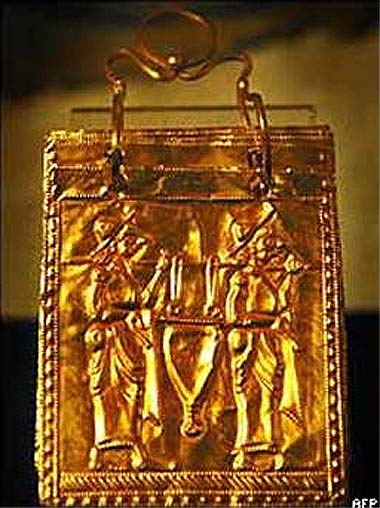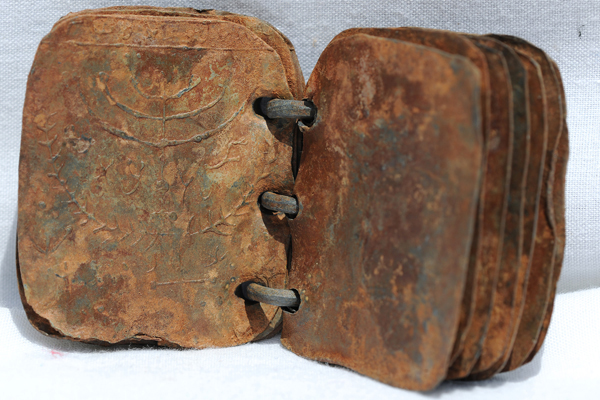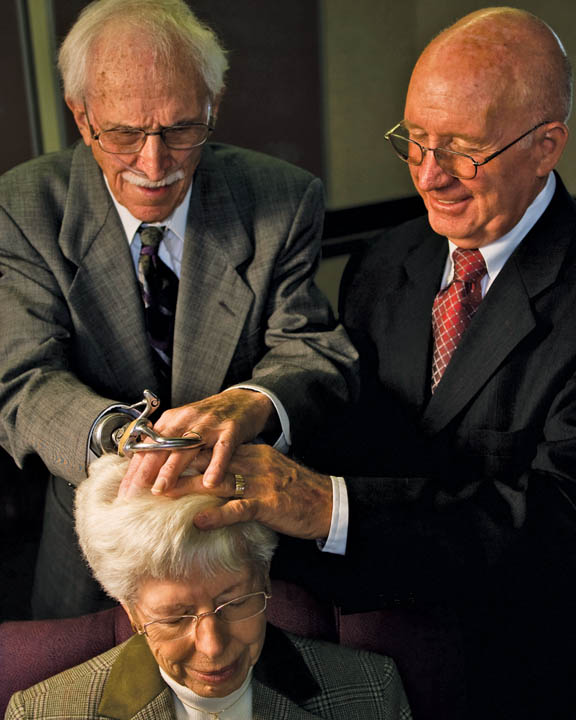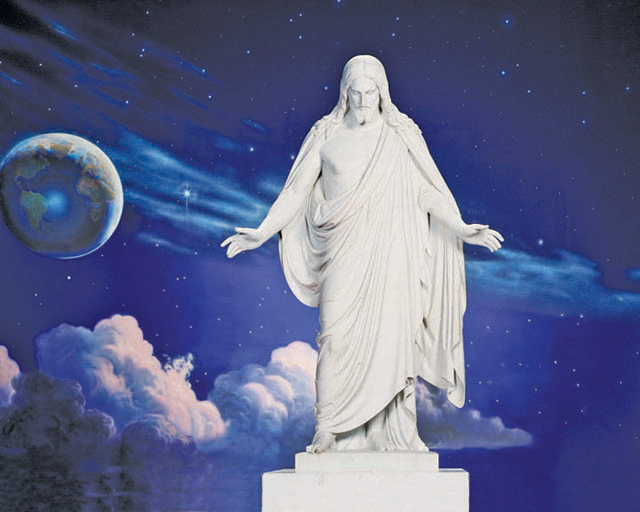Golden Plates on Display in Bulgaria
�
The world’s oldest multiple-page book – in the lost Etruscan language – has gone on display in Bulgaria’s National History Museum in Sofia. And something about that book has particular interest for Latter-day Saints. [1]
�
As is evident from the photograph, this book was created on metal plates that are bound together with metal rings similar to the original source documents that became the Book of Mormon.
 �
�The book dates back to 600 B.C., which is roughly the time that Lehi and his family left Jerusalem. �
�
The small manuscript, which is more than two and a half millennia old, was discovered 60 years ago in a tomb uncovered during digging for a canal along the Strouma River in southwestern Bulgaria. It has now been donated to the museum by its finder, on condition of anonymity.
�
Reports say the unidentified donor is now 87 years old and lives in Macedonia.The authenticity of the book has been confirmed by two experts in Sofia and London, museum director Bojidar Dimitrov said quoted by AFP. The six sheets are believed to be the oldest comprehensive work involving multiple pages, said Elka Penkova, who heads the museum’s archaeological department.
�
There are around 30 similar pages known in the world, Ms Penkova said, “but they are not linked together in a book”.
�
The Etruscans – one of Europe’s most mysterious ancient peoples – are believed to have migrated from Lydia, in modern western Turkey, settling in northern and central Italy nearly 3,000 years ago. They were wiped out by the conquering Romans in the fourth century BC, leaving few written records.
�
The long debated question about bound metal records existing in the Middle East 2500 years ago as claimed by the Book of Mormon can now be put to rest. Critics should take note and check that item off their list of objections to the authenticity of the Book of Mormon.
Early Christian Codices
 Also discovered in the country of Jordan are early Christian codices engraved on lead plates and bound with rings (as were the Book of Mormon plates). Seventy of these codices have been found, and will be translated. Although these are made of lead, the Book of Mormon plates are made of brass and gold alloys. Click here to read more about the Christian codices. They are considered the most important find since the Dead Sea Scrolls.
Also discovered in the country of Jordan are early Christian codices engraved on lead plates and bound with rings (as were the Book of Mormon plates). Seventy of these codices have been found, and will be translated. Although these are made of lead, the Book of Mormon plates are made of brass and gold alloys. Click here to read more about the Christian codices. They are considered the most important find since the Dead Sea Scrolls.
And There’s More…
From the Louvre, to the Vatican Library, to Seoul, Korea, there are literally hundreds of samples of metal plates (gold, silver, copper and Bronze) that have survived, inscribed with ancient languages that date from the third millennium B.C. Metal rings to hold several metal leaves together have now been discovered, along with stone boxes to hold plates.
The “Plates of Darius I, ruler of Persia from 518–515 B.C., are the closest parallel to the Book of Mormon yet discovered. Two tablets, one of gold and one of silver, were placed in each stone box to be buried at the four corners of his palace. They describe the boundaries of his kingdom, praise Ahuramazda, ‘the greatest of all the gods,’ and pray protection upon Darius ‘and [his] royal house.’ They were discovered by an archaeological team in 1938” (Ensign, October 1979, 43.) They are now housed in the National Archaeological Museum, Tehran, Iran.
Read more in the upcoming two volume commentary on the Book of Mormon by Andrew Skinner and D. Kelly Ogden.





This website needs to be updated to the correct name of The Church of Jesus Christ of Latter Day Saints.
We are working on it. Changing a website domain is complicated, and that’s why the prophet told us to proceed slowly and patiently.